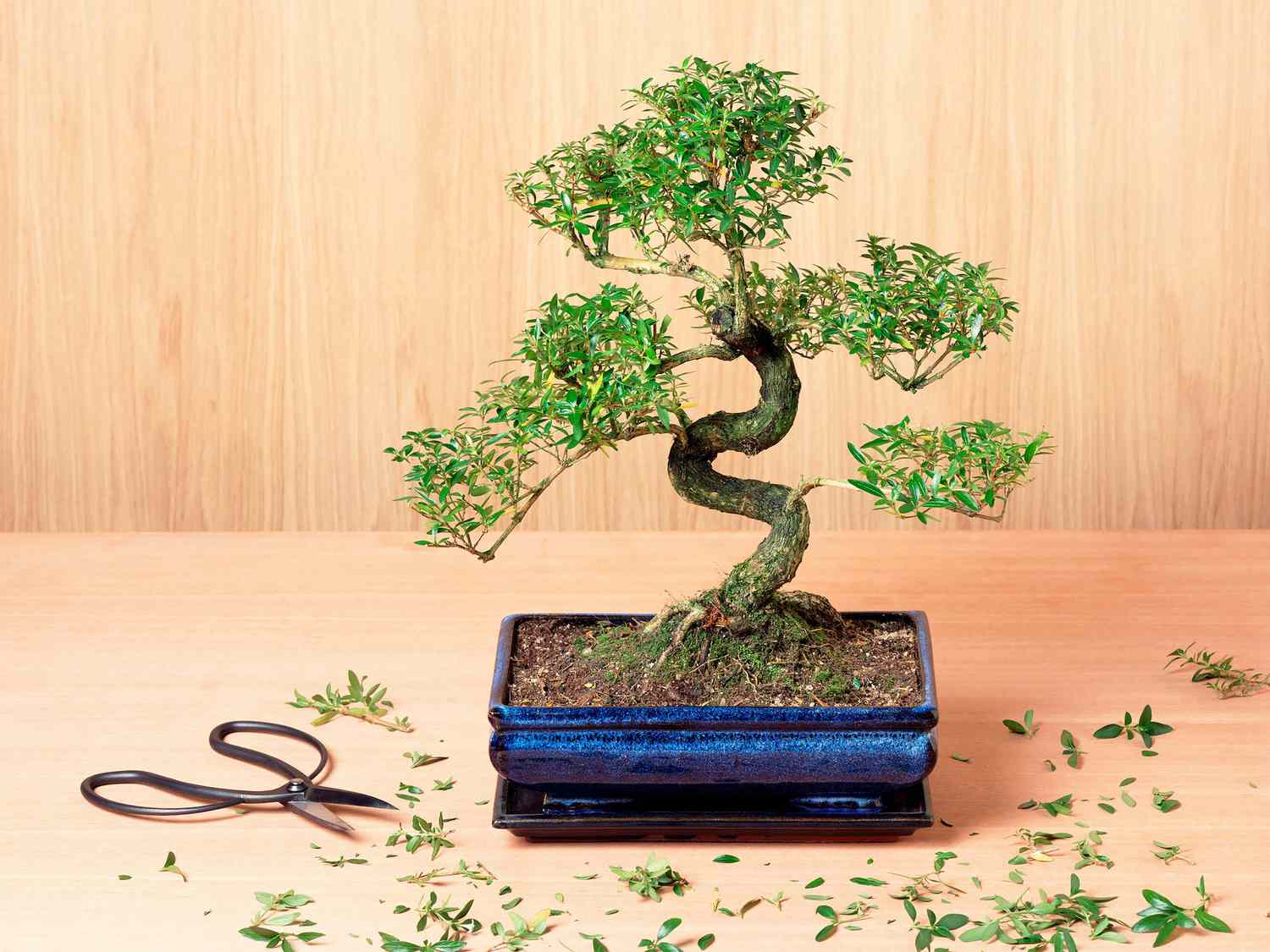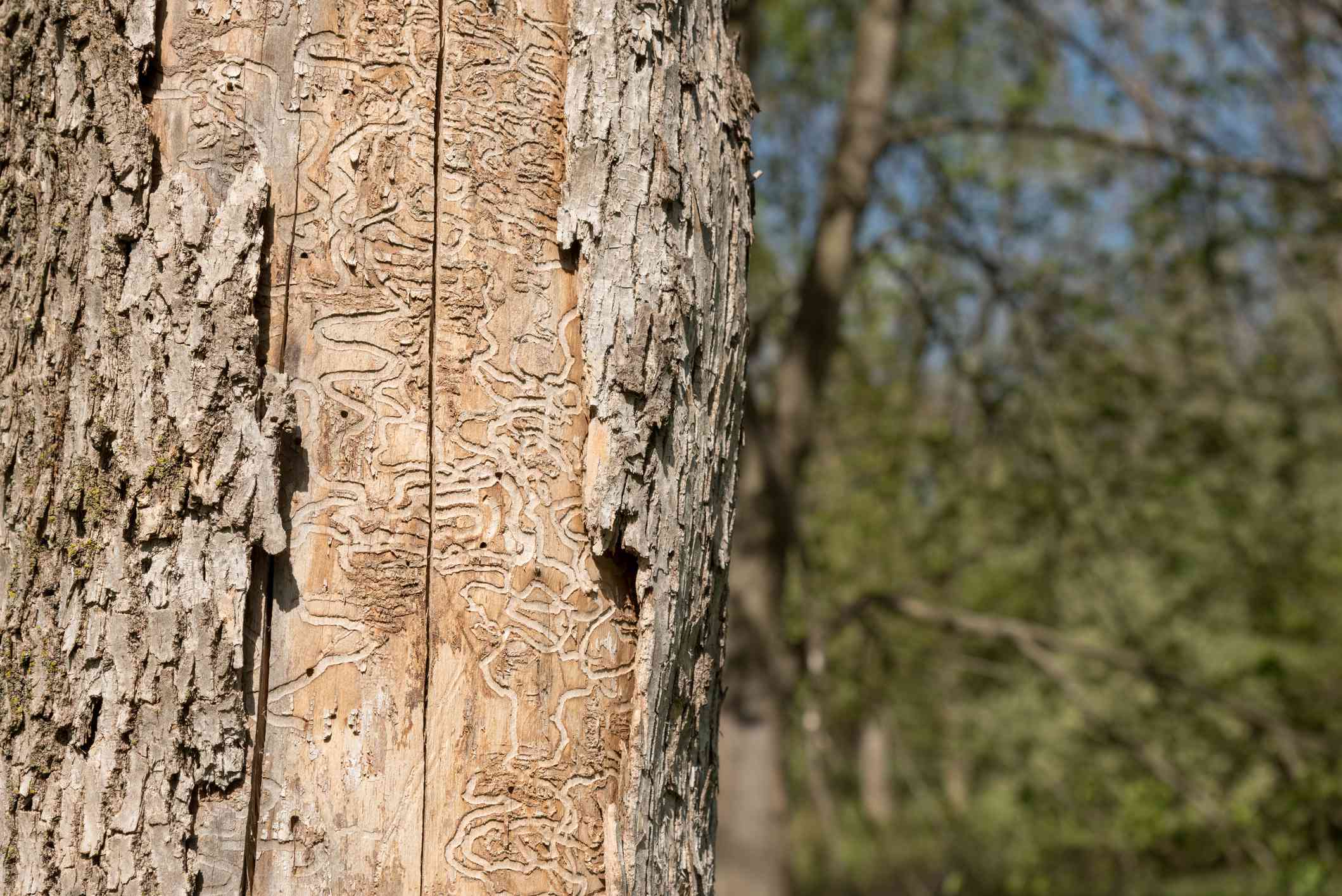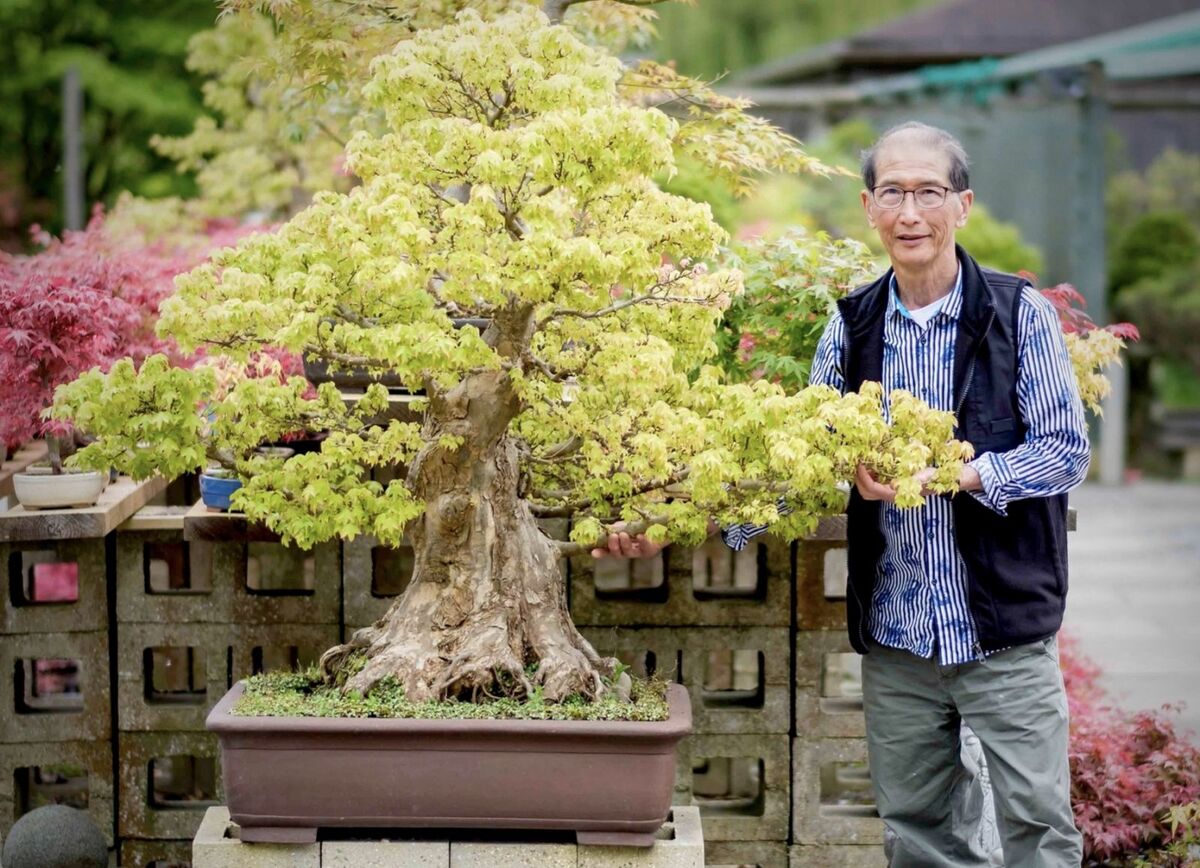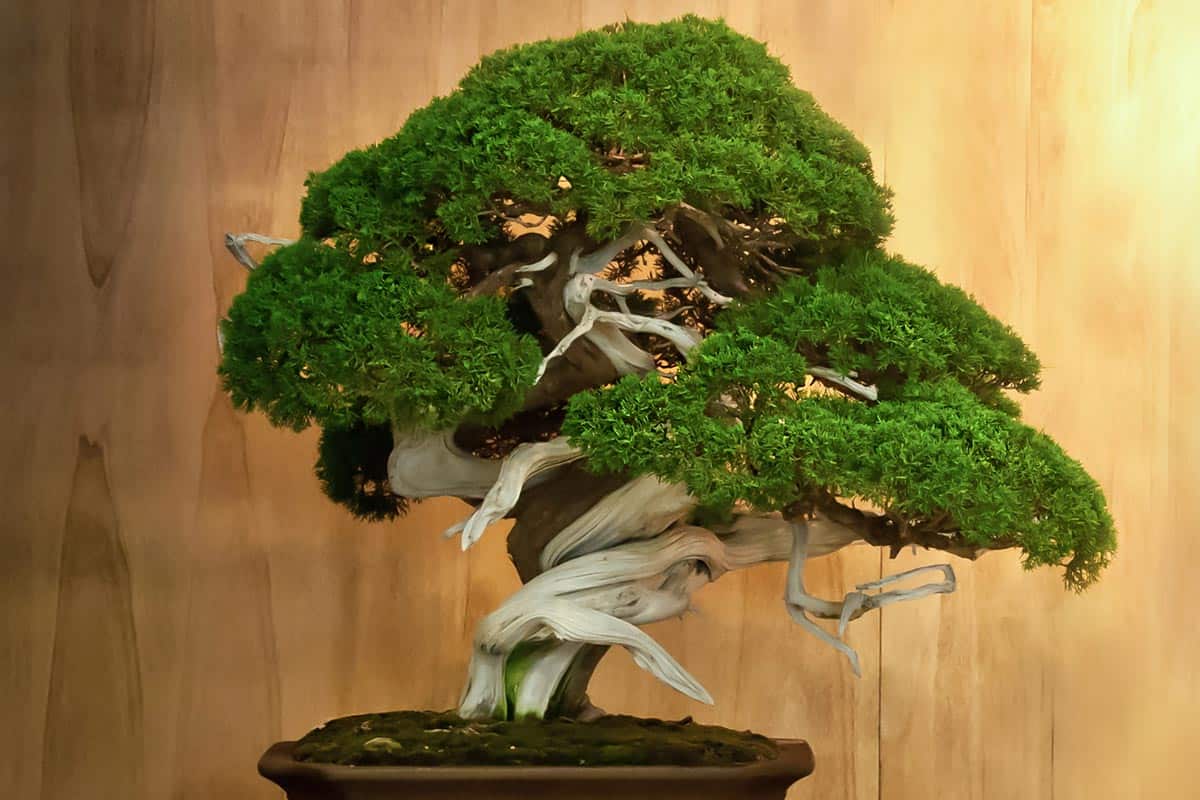Home>Types of Gardening>Ornamental Gardening>What To Do If Bonsai Tree Is Dying


Ornamental Gardening
What To Do If Bonsai Tree Is Dying
Modified: January 22, 2024
Discover effective tips for reviving a dying bonsai tree in your ornamental garden. Learn how to identify and address common issues to restore your bonsai's health and vitality.
(Many of the links in this article redirect to a specific reviewed product. Your purchase of these products through affiliate links helps to generate commission for Chicagolandgardening.com, at no extra cost. Learn more)
Table of Contents
**
Introduction
**
Welcome to the enchanting world of bonsai trees, where the art of cultivation intertwines with the tranquility of nature. Bonsai, a Japanese tradition that dates back centuries, involves nurturing miniature trees that exude timeless beauty and grace. These captivating creations require meticulous care and attention to flourish, but even the most devoted enthusiasts may encounter challenges in maintaining their bonsai's health. If you've noticed signs of decline in your cherished bonsai tree, fear not, for there are steps you can take to revive its vitality and restore its natural splendor.
The journey of caring for a bonsai tree is a rewarding one, offering a profound connection to the natural world and the opportunity to witness the magic of growth and resilience on a miniature scale. As with any living being, a bonsai tree can experience periods of distress, but with the right knowledge and techniques, you can guide it back to thriving health.
In the following sections, we will explore the signs that indicate a bonsai tree may be ailing, the common causes of decline, and the essential steps to revive a struggling bonsai. Additionally, we will delve into preventive measures to safeguard the well-being of your bonsai tree, ensuring that it continues to flourish and bring joy for years to come.
Join me on this journey to uncover the secrets of nurturing and rejuvenating bonsai trees, and let's embark on a quest to preserve the timeless elegance and resilience of these miniature marvels.
Now, let's delve into the signs that may indicate your bonsai tree is in distress and in need of your tender care.
**
Signs of a Dying Bonsai Tree
**
Understanding the subtle cues that indicate a bonsai tree may be ailing is essential for prompt intervention and revival. By keenly observing your bonsai, you can detect signs of distress and take the necessary steps to restore its vitality. Here are the key indicators that your bonsai tree may be in decline:
Wilting Leaves: If you notice that the leaves of your bonsai tree are wilting, turning yellow, or falling off prematurely, it is a clear signal of potential health issues. Healthy bonsai trees boast vibrant, lush foliage, so any significant changes in leaf appearance should be carefully noted.
Stunted Growth: A thriving bonsai tree exhibits steady growth, with new leaves and branches developing regularly. If you observe a lack of new growth or a significant slowdown in the tree's overall development, it may be a sign of underlying health concerns.
Browning or Brittle Roots: When inspecting the roots of your bonsai tree, look for any signs of browning, brittleness, or a foul odor, as these indicate root rot or other root-related issues. Healthy roots are essential for the tree's well-being, so any abnormalities in this area require immediate attention.
Dry or Cracked Soil: The condition of the soil in your bonsai's pot is a crucial indicator of its health. If the soil appears excessively dry, cracked, or hardened, it may signify inadequate watering or poor drainage, both of which can jeopardize the tree's vitality.
Pest Infestation: The presence of pests such as aphids, spider mites, or scale insects on your bonsai tree can cause significant harm if left unchecked. Keep a watchful eye for any signs of pest infestation, including visible insects, webbing, or damage to the leaves.
Unusual Discoloration: Any abnormal discoloration of the tree's trunk, branches, or foliage, such as dark spots, mold, or unusual patterns, should be regarded as potential indicators of health issues.
By remaining attuned to these signs, you can promptly address any concerns and take proactive measures to revive your bonsai tree’s health. Now, let’s delve into the common causes behind bonsai tree decline, shedding light on the factors that may be impacting your tree’s well-being.
**
Common Causes of Bonsai Tree Decline
**
Understanding the potential culprits behind a bonsai tree’s decline is pivotal in addressing the root causes of its distress. Several factors can contribute to the deterioration of a bonsai’s health, and being aware of these common causes is essential for implementing effective remedies. Here are the primary reasons behind bonsai tree decline:
Improper Watering: Overwatering or underwatering can have detrimental effects on a bonsai tree’s health. Excessive moisture can lead to root rot and fungal diseases, while insufficient watering can result in dehydration and nutrient deficiencies.
Poor Drainage: Inadequate drainage in the bonsai pot can lead to waterlogged soil, suffocating the roots and impeding the tree’s ability to absorb essential nutrients. Proper drainage is crucial for maintaining a healthy root environment.
Incorrect Soil Composition: Using the wrong type of soil or a suboptimal soil mixture can hinder the bonsai tree’s growth and overall health. The soil should provide adequate aeration, moisture retention, and nutrient accessibility to support the tree’s well-being.
Insufficient Light: Bonsai trees require ample sunlight to thrive, and a lack of adequate light exposure can impede their photosynthetic processes, leading to weakened growth and vitality.
Extreme Temperatures: Exposure to extreme heat or cold can stress a bonsai tree and compromise its resilience. Sudden temperature fluctuations can also disrupt the tree’s metabolic functions and overall health.
Nutrient Deficiencies: A lack of essential nutrients, such as nitrogen, phosphorus, and potassium, can manifest as stunted growth, yellowing leaves, and overall weakness in the bonsai tree. Maintaining proper fertilization is crucial for supplying the tree with vital nutrients.
Pest and Disease Infestation: Bonsai trees are susceptible to pest infestations and diseases, which can weaken the tree and impede its growth if not promptly addressed. Common pests include aphids, spider mites, and scale insects, while fungal infections and bacterial diseases can also pose significant threats.
By recognizing these common causes of bonsai tree decline, you can pinpoint the specific factors affecting your tree’s health and take targeted measures to revive its vigor. Now, let’s explore the essential steps to revitalize a struggling bonsai tree and restore it to a state of flourishing beauty.
**
Steps to Revive a Dying Bonsai Tree
**
Reviving a struggling bonsai tree requires a thoughtful and systematic approach, encompassing key interventions to address its specific health issues. By following these essential steps, you can breathe new life into your beloved bonsai and set it on the path to rejuvenation:
Assess the Root System: Carefully examine the roots of the bonsai tree to identify any signs of rot, decay, or overcrowding. Gently remove the tree from its pot and trim any damaged or unhealthy roots, ensuring proper aeration and space for new growth.
Re-pot the Bonsai: If the root system shows signs of distress, consider re-potting the bonsai using fresh, well-draining soil. Choose a pot with adequate drainage holes to promote a healthy root environment and prevent waterlogging.
Adjust Watering Practices: Evaluate your watering routine and ensure that it aligns with the specific moisture needs of your bonsai tree species. Strike a balance between hydration and drainage, allowing the soil to slightly dry out between watering sessions to prevent root suffocation.
Provide Adequate Light: Position your bonsai tree in a location that receives the appropriate amount of sunlight for its species. Ensure that it gets sufficient natural light or supplement with grow lights to support robust growth and photosynthetic processes.
Address Nutritional Needs: Administer a balanced, diluted fertilizer to replenish essential nutrients and support the bonsai tree’s recovery. Select a fertilizer that aligns with the tree’s specific requirements and apply it according to the recommended frequency and dosage.
Combat Pests and Diseases: If your bonsai tree is afflicted by pests or diseases, employ targeted treatments to eliminate the harmful agents. Consider using natural pest control methods or carefully selected horticultural products to safeguard the tree’s health without compromising its well-being.
Monitor and Nurture: Keep a close watch on your revived bonsai tree, observing its response to the implemented interventions and adjusting your care regimen accordingly. Provide attentive nurturing, including regular pruning, to encourage new growth and shape the tree’s form.
By following these steps with diligence and care, you can breathe new vitality into your bonsai tree and witness its remarkable resurgence. Now, let’s explore proactive measures to safeguard the health and resilience of your bonsai tree, preventing future bouts of decline.
**
Prevention Tips for Bonsai Tree Health
**
Ensuring the long-term well-being of your cherished bonsai tree involves proactive measures to prevent potential health challenges and maintain its vitality. By implementing these preventive tips, you can create an optimal environment for your bonsai tree to thrive and flourish:
Optimize Watering Practices: Establish a consistent watering routine that caters to the specific moisture requirements of your bonsai tree species. Monitor the soil’s moisture levels and adjust your watering frequency based on environmental factors and seasonal changes.
Select Appropriate Soil: Choose a well-draining, nutrient-rich soil mix that promotes healthy root development and provides essential aeration. The right soil composition is crucial for maintaining optimal moisture levels and supporting the bonsai tree’s overall health.
Provide Adequate Sunlight: Position your bonsai tree in a location that receives ample sunlight suitable for its species. Research the light preferences of your specific bonsai variety and ensure that it receives the necessary light exposure for robust growth and vitality.
Monitor for Pests and Diseases: Routinely inspect your bonsai tree for signs of pest infestations, such as unusual spots on leaves, webbing, or visible insects. Stay vigilant for symptoms of diseases and address any issues promptly to prevent the spread of harmful agents.
Implement Regular Pruning: Engage in regular pruning to maintain the bonsai tree’s shape, encourage new growth, and remove any diseased or damaged foliage. Pruning also supports the tree’s overall health and enhances its aesthetic appeal.
Appropriate Fertilization: Administer a balanced fertilizer at the appropriate intervals to supply the bonsai tree with essential nutrients for sustained growth and vitality. Select a fertilizer that aligns with the tree’s specific requirements and follow recommended application guidelines.
Protect from Extreme Conditions: Shield your bonsai tree from extreme temperatures, strong winds, and abrupt fluctuations in environmental conditions. Create a sheltered setting during severe weather and ensure that the tree is not exposed to prolonged stress-inducing factors.
By incorporating these preventive measures into your bonsai tree care regimen, you can fortify its resilience and minimize the risk of health setbacks. With attentive and proactive care, your bonsai tree will thrive and captivate with its enduring beauty for years to come.
**
Conclusion
**
Embarking on the journey of nurturing and preserving a bonsai tree is a deeply rewarding endeavor, offering a profound connection to the beauty and resilience of nature. By recognizing the signs of a struggling bonsai tree, understanding the common causes of decline, and implementing targeted steps for revival, you can breathe new life into your cherished miniature marvel.
From wilting leaves to pest infestations, the challenges that may beset a bonsai tree can be met with knowledge, care, and a touch of artistry. By tending to the root causes of decline, adjusting care practices, and providing attentive nurturing, you can guide your bonsai tree back to a state of flourishing vitality.
Furthermore, by embracing preventive measures such as optimizing watering practices, providing adequate sunlight, and implementing regular pruning, you can safeguard the long-term health and resilience of your bonsai tree. These proactive steps serve as a foundation for sustaining the tree’s beauty and vitality, ensuring that it continues to captivate with its timeless elegance.
As you immerse yourself in the art of bonsai cultivation, remember that each tree tells a story of patience, resilience, and the enduring beauty of nature. Through your dedicated care and nurturing touch, your bonsai tree becomes a living testament to the harmony between human artistry and the majesty of the natural world.
So, as you tend to your bonsai tree, let the journey be a source of joy, discovery, and a deepening bond with the wondrous cycles of growth and renewal. With each careful pruning and tender watering, you breathe life into a timeless art form, preserving the spirit of the bonsai for generations to come.
May your bonsai tree thrive and inspire, a testament to the enduring allure of nature’s miniature masterpieces.




